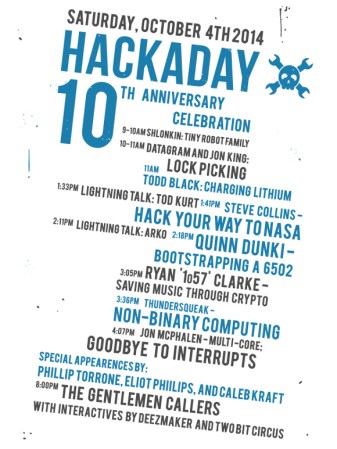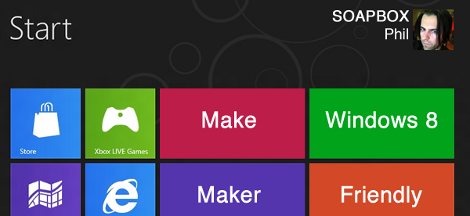 A little more than a month ago we saw the 10 year anniversary of the first Hackaday post ever, and last week we had a little get together in Pasadena to celebrate the occasion. Everyone had a great time, building tiny line-following robots and LiPo chargers, listening to some great talks, and in the evening we all had a lot of fun emptying some kegs. We couldn’t ask for a better crowd, and we thank everyone who came (and those of you who watched everything on the livestream) for participating.
A little more than a month ago we saw the 10 year anniversary of the first Hackaday post ever, and last week we had a little get together in Pasadena to celebrate the occasion. Everyone had a great time, building tiny line-following robots and LiPo chargers, listening to some great talks, and in the evening we all had a lot of fun emptying some kegs. We couldn’t ask for a better crowd, and we thank everyone who came (and those of you who watched everything on the livestream) for participating.
As far as specific people go, we need to thank [charliex], [arko] and everyone else from Null Space Labs for helping out with the weird rotary encoder two-player version of Duck Hunt. The folks from Crashspace were also there, helping out and lending a steady hand and hot soldering iron during the workshops. Shoutouts also go to [datagram] and [jon king] for running the lockpicking workshop, and [Todd Black] deserves a mention for his lithium battery charger workshop. All the speakers deserve to be mentioned again, and you can check out a playlist of their talks below:
















